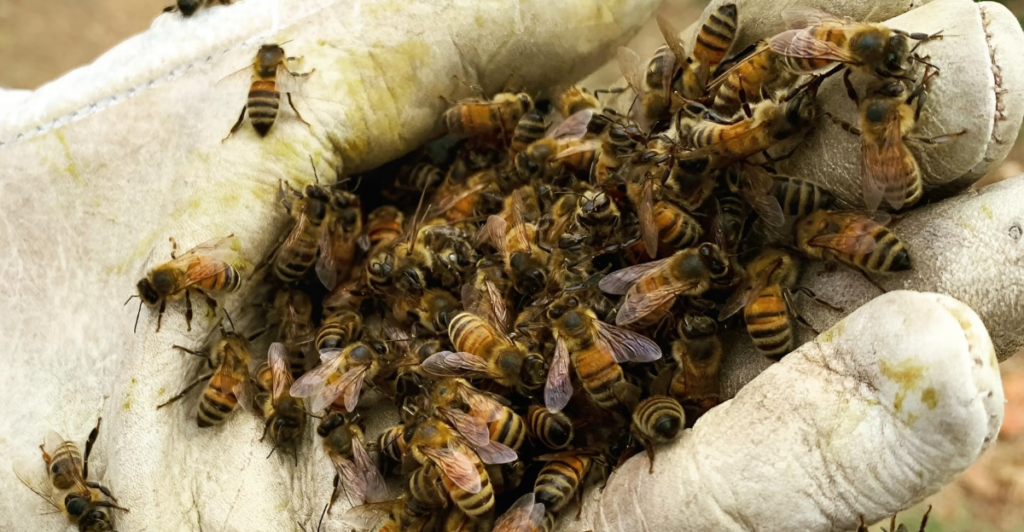
Beekeepers across the United States are facing unprecedented losses in their honeybee colonies, sparking widespread concern. Recent reports indicate that commercial beekeepers have lost an average of 62% of their colonies between June 2024 and February 2025. This alarming trend not only threatens the livelihoods of beekeepers but also poses significant risks to agriculture and food production nationwide.
Honeybees play a crucial role in pollinating approximately $15 billion worth of crops annually in the U.S., including almonds, fruits, and vegetables. The sharp decline in bee populations could lead to reduced crop yields and increased prices for consumers, highlighting the interconnectedness of bee health and the broader agricultural economy.
Understanding the factors contributing to these devastating losses is essential for developing effective strategies to protect honeybee populations and, by extension, the stability of our food supply.
The Alarming Statistics – Numbers That Sting
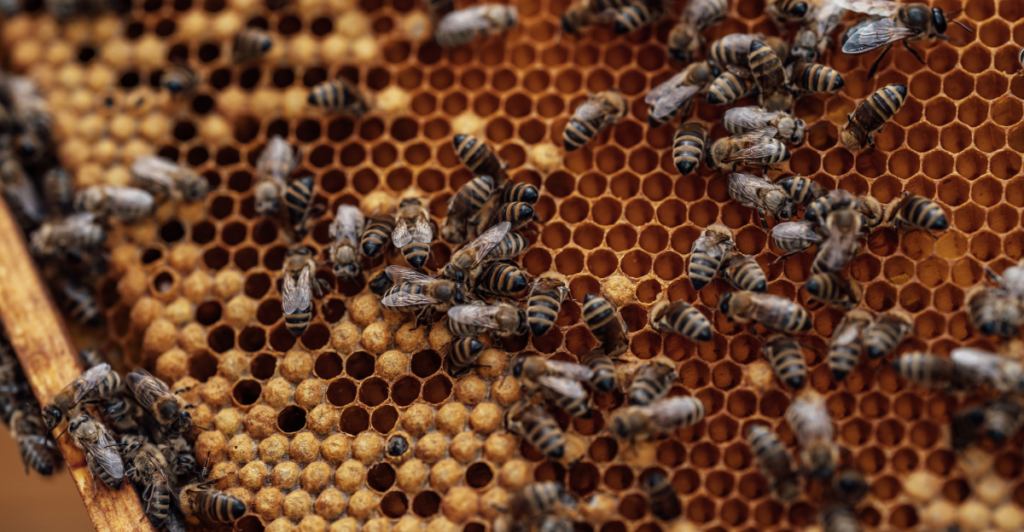
The recent survey conducted by Project Apis reveals that commercial beekeepers reported an average loss of 62% of their colonies from June 2024 to February 2025. This figure significantly exceeds the historical average annual loss, which typically ranges between 30% and 50%.
In total, over 1.1 million honeybee colonies have been lost during this period, marking one of the most severe declines on record. These substantial losses have raised alarms among beekeepers, researchers, and agricultural stakeholders, as they could have far-reaching implications for crop pollination and food production.
The severity of these losses underscores the urgent need for comprehensive research and intervention to identify and mitigate the underlying causes threatening honeybee populations.
Causes Behind the Decline – A Complex Web
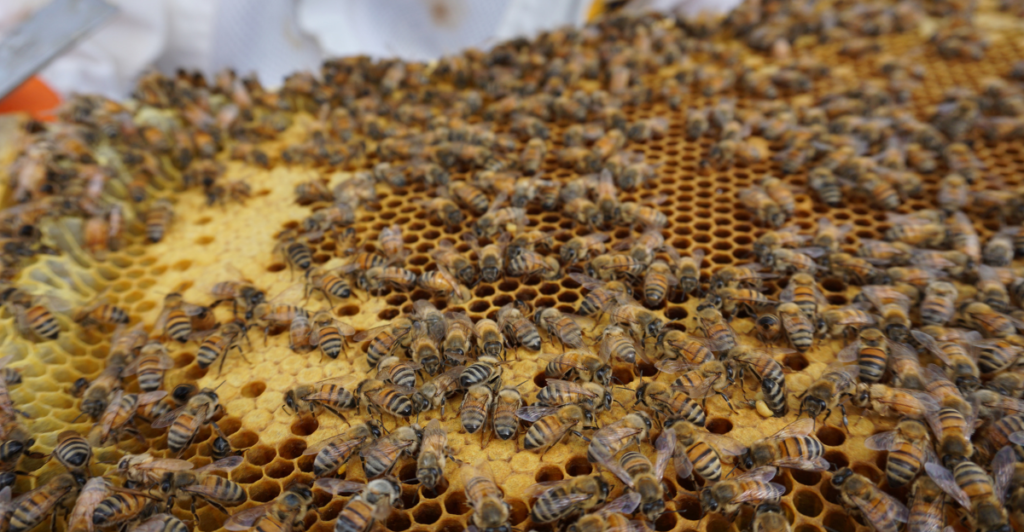
Multiple factors are believed to contribute to the significant decline in honeybee colonies. Among the primary concerns are infestations by the parasitic varroa mite, which weakens bees and transmits harmful pathogens. Additionally, exposure to pesticides, particularly neonicotinoids, has been linked to adverse effects on bee health and foraging behavior.
Habitat loss due to urbanization and monoculture farming practices has reduced the availability of diverse forage, leading to nutritional deficiencies in bee populations. Furthermore, climate change has altered blooming patterns and increased the frequency of extreme weather events, disrupting the natural foraging and reproductive cycles of bees.
The interplay of these stressors creates a challenging environment for honeybees, making it imperative to address each factor to support the resilience and recovery of bee colonies.
Impact on Agriculture – Crops in Jeopardy
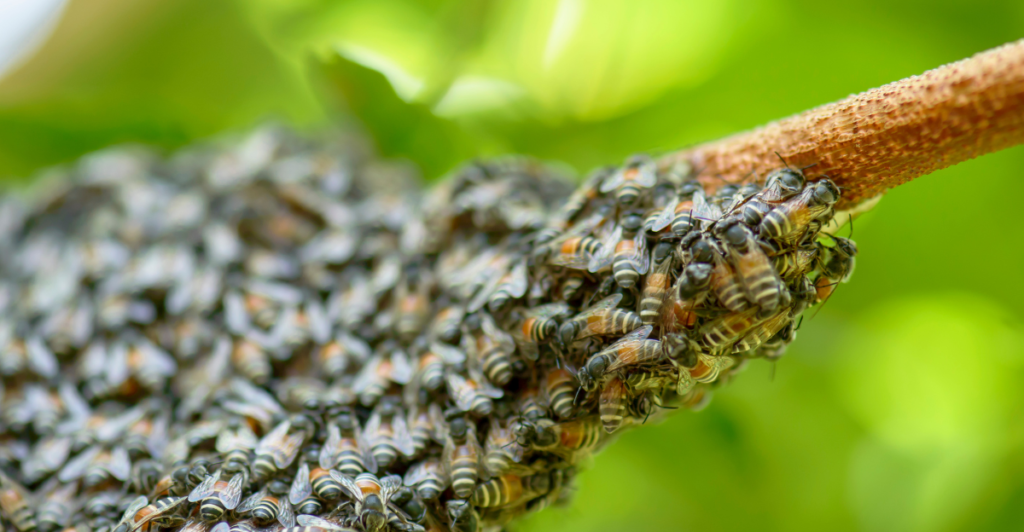
The decline in honeybee populations poses a significant threat to agriculture, particularly for crops that rely heavily on bee pollination. California’s almond industry, for instance, depends on approximately 2 million bee colonies for pollination each season. With the recent losses, there is a projected shortfall of 300,000 to 500,000 hives, potentially reducing almond yields and increasing production costs.
Beyond almonds, other crops such as apples, blueberries, and cucumbers, also face pollination challenges. The reduced availability of healthy bee colonies could lead to lower crop outputs, affecting both farmers’ incomes and consumers’ access to these products.
Addressing the factors contributing to bee declines is essential not only for the sustainability of beekeeping but also for maintaining the productivity and diversity of the nation’s agricultural landscape.
Economic Ramifications – The Cost of Bee Decline
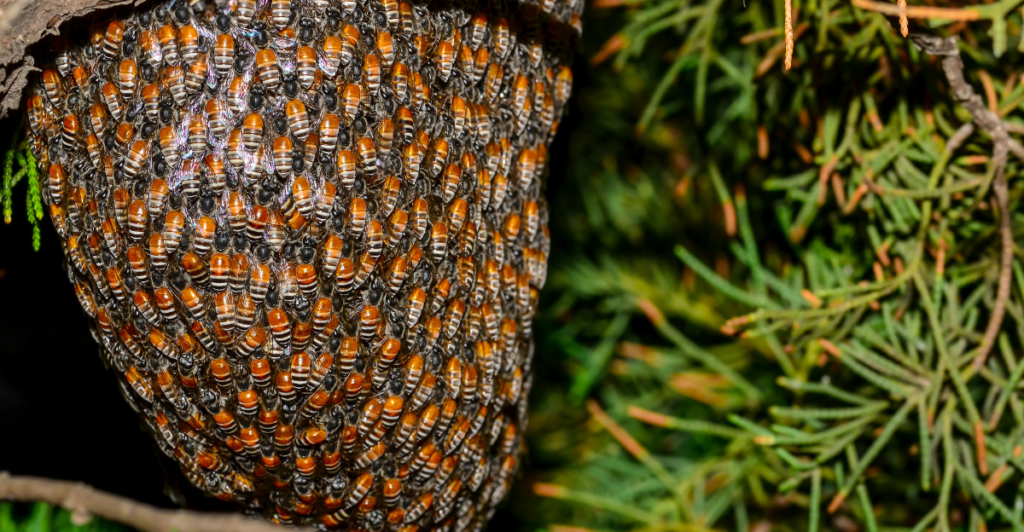
The financial impact of honeybee colony losses extends beyond the beekeeping industry, affecting the broader agricultural economy. Beekeepers face increased costs associated with replacing lost colonies and implementing measures to protect remaining hives. These expenses often translate to higher fees for pollination services, which can strain farmers’ budgets.
For example, the almond industry, heavily reliant on bee pollination, may experience increased production costs due to the need for additional hives and the potential decrease in crop yields. These added expenses could lead to higher prices for consumers and reduced competitiveness in global markets.
The economic ripple effects underscore the importance of investing in research and policies aimed at mitigating bee losses and ensuring the stability of pollination services critical to agriculture.
Beekeepers’ Struggles – Voices from the Field
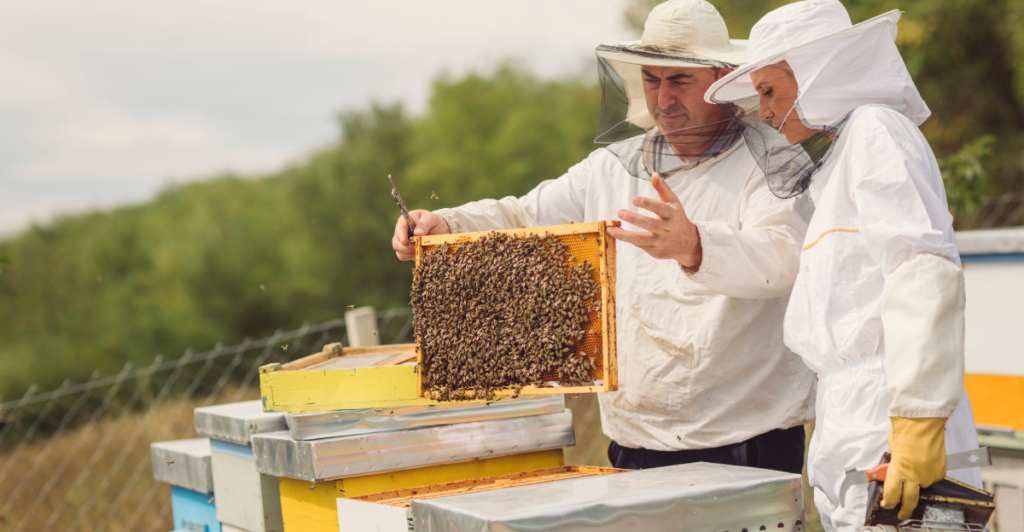
Beekeepers nationwide are expressing deep concern over the unprecedented colony losses. Blake Shook, a prominent beekeeper, reported finding tens of thousands of dead bees in his operations, describing the situation as unparalleled in his experience. Such losses not only affect honey production but also the ability to fulfill pollination contracts essential for various crops.
The financial strain of replenishing colonies, coupled with the emotional toll of losing hives nurtured over time, has left many beekeepers questioning the sustainability of their profession. The cumulative impact of these challenges threatens the viability of beekeeping operations, particularly for small-scale and family-run businesses.
Addressing the root causes of colony losses is critical to supporting beekeepers and ensuring the continuation of the essential pollination services they provide.
Conservation Efforts – Fighting for the Hive
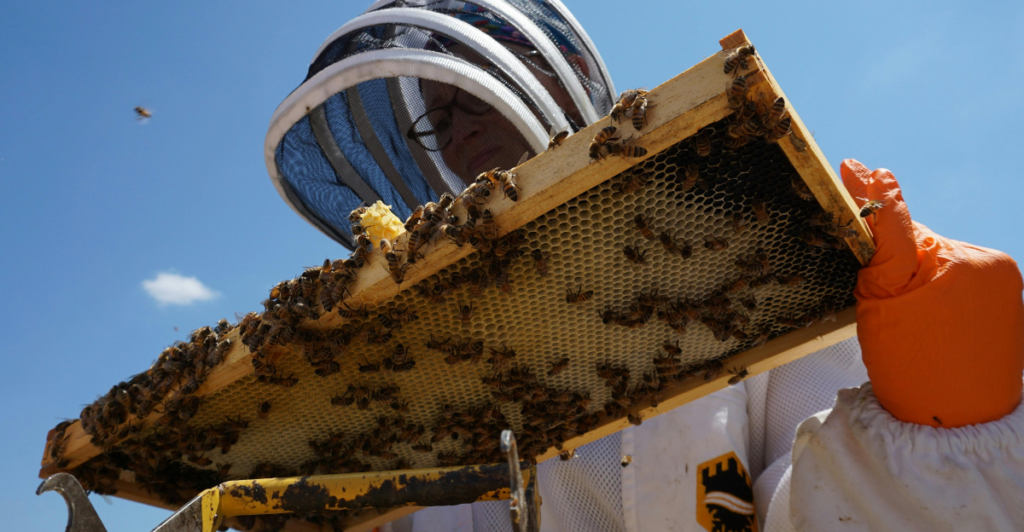
Beekeepers, scientists, and environmental groups are working together to reverse the damage. Across the U.S., initiatives are planting wildflower corridors and restoring habitats rich in nectar and pollen—essential for bee survival.
Research is also expanding into safer alternatives to neonicotinoids and more effective varroa mite treatments. Organizations like Pollinator Partnership and Bee Informed Partnership are helping educate farmers and the public about pollinator-safe practices.
Public policies are slowly catching up. Several states have begun restricting harmful pesticides and funding bee research. While progress is uneven, these efforts show that people are finally listening—and fighting back for the bees.
Role of Backyard Beekeeping – Small Hives, Big Help
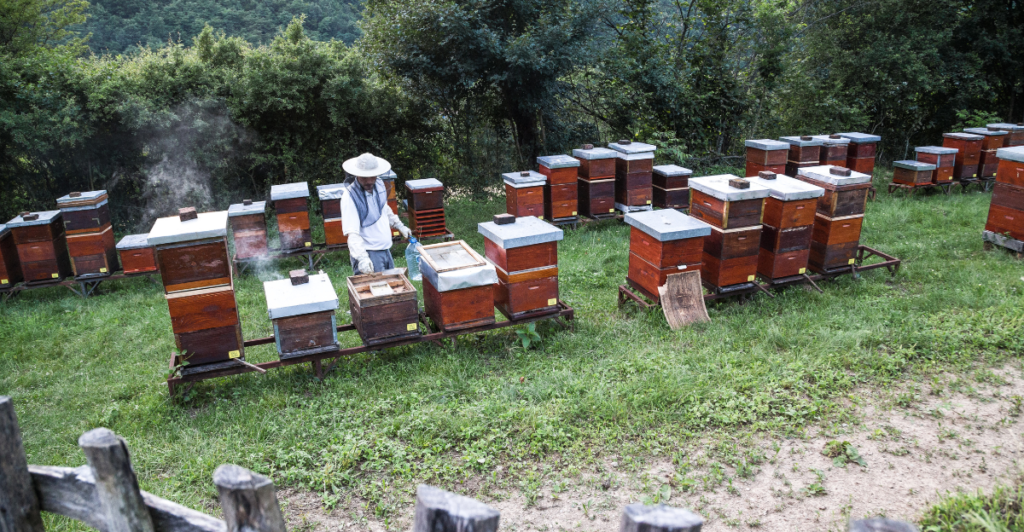
While commercial losses make headlines, small-scale and backyard beekeepers are quietly making a difference. Their bees pollinate local gardens and serve as genetic strongholds for more diverse and resilient colonies.
Urban beekeeping is growing fast. From rooftops in New York to backyards in California, more people are raising bees as both a hobby and a contribution to their communities. These setups often avoid harsh agricultural chemicals and provide stable environments.
Supporting local beekeepers by buying their honey or beeswax products not only boosts small businesses—it helps maintain pollination services in local ecosystems. In the fight for bees, even the smallest hives can make a huge impact.
What You Can Do – Protecting Bees Starts at Home
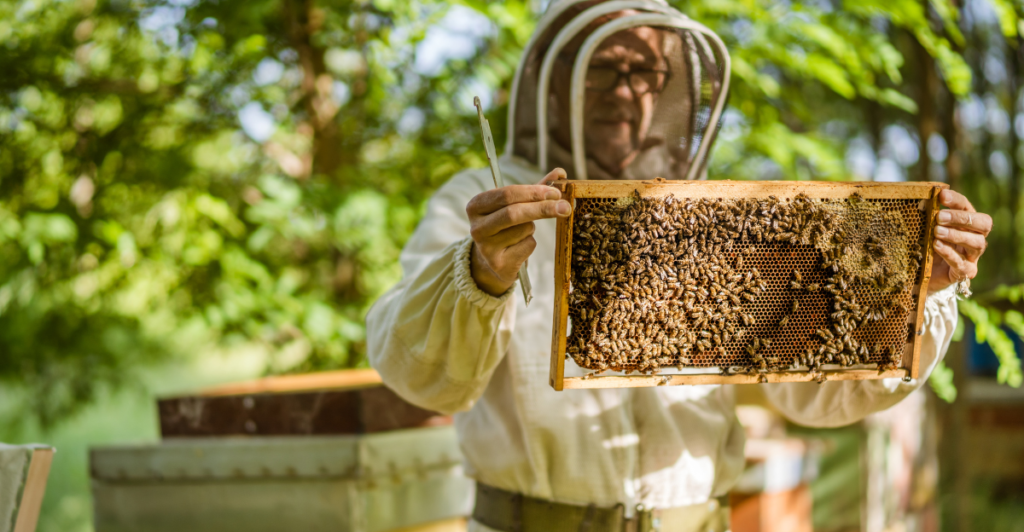
You don’t need to be a beekeeper to help. Start by planting native wildflowers in your garden or balcony. Bees love plants like lavender, sunflowers, and coneflowers, and these easy additions can offer year-round support.
Cutting back on pesticides—especially neonicotinoids—makes a huge difference. Even better? Let a corner of your yard grow wild. Bees thrive in “messy” spaces filled with natural cover and food.
Every decision counts. Buying local honey, supporting farmers who use pollinator-friendly practices, or even sharing info on social media can help protect bee populations. It all adds up—bee survival depends on collective action.
Explore more of our trending stories and hit Follow to keep them coming to your feed!

Don’t miss out on more stories like this! Hit the Follow button at the top of this article to stay updated with the latest news. Share your thoughts in the comments—we’d love to hear from you!







